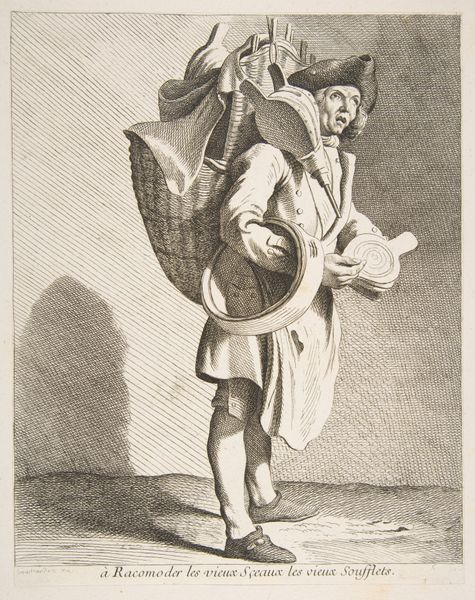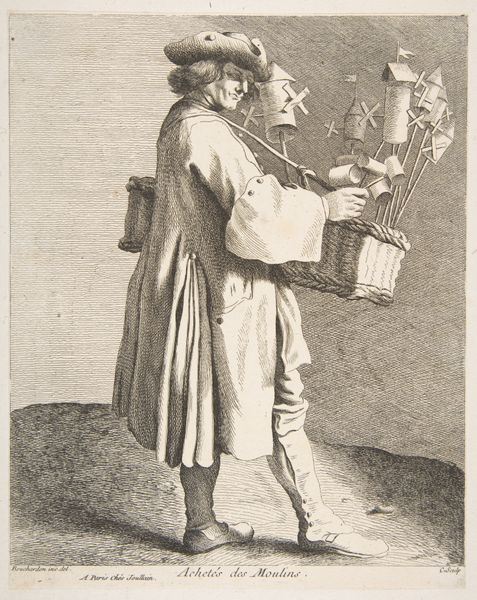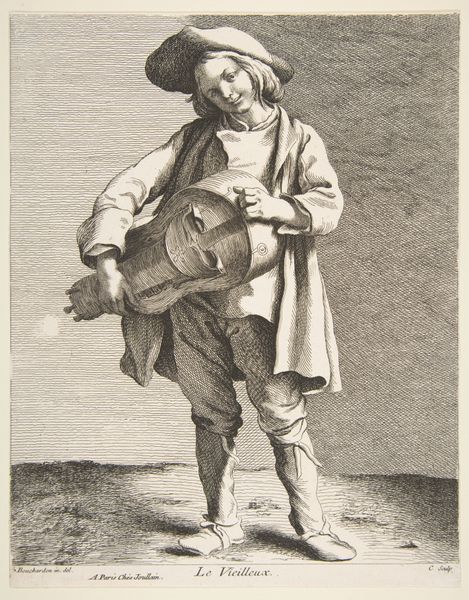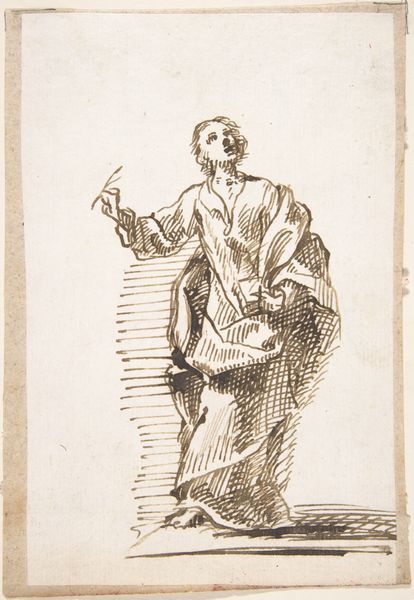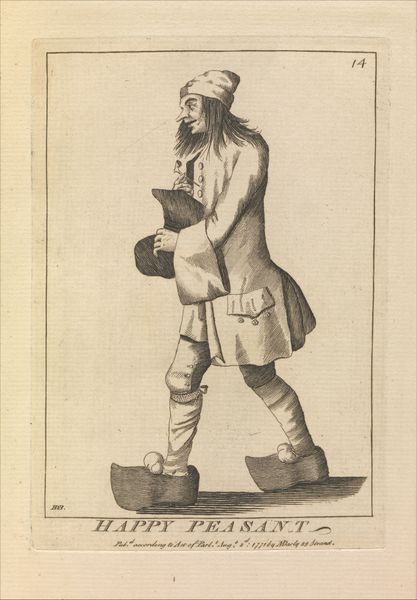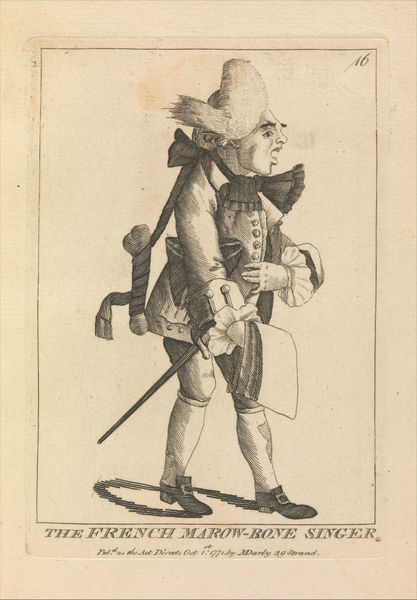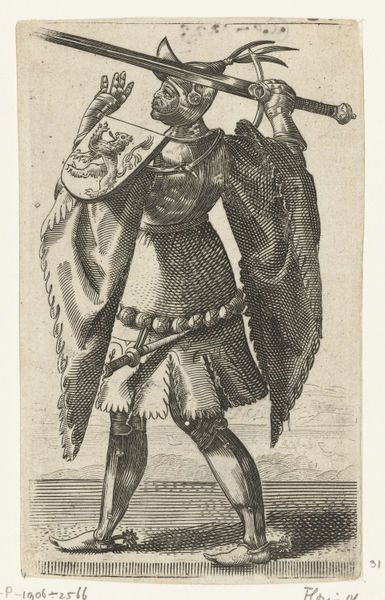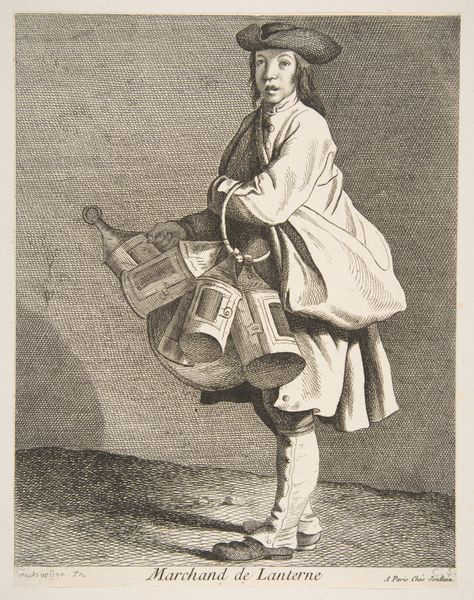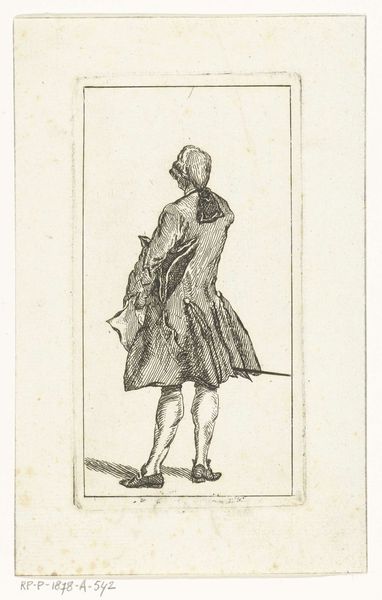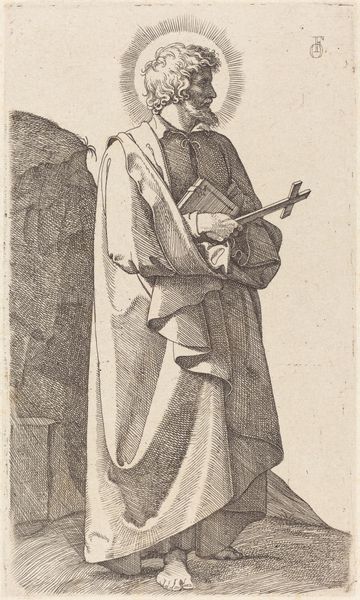
drawing, print, etching
#
portrait
#
drawing
#
baroque
# print
#
etching
#
men
#
portrait drawing
#
genre-painting
Dimensions: Sheet: 9 5/16 x 7 7/16 in. (23.6 x 18.9 cm) Image: 8 7/8 x 7 3/8 in. (22.5 x 18.8 cm)
Copyright: Public Domain
Editor: Here we have Anne Claude Philippe Caylus’s “The Rat Catcher,” made in 1746. It's an etching, a kind of print. The man seems burdened by all the traps on his back. How should we understand this piece? Curator: Well, let's consider the process of creating an etching like this in the 18th century. Each line had to be painstakingly etched into a metal plate, requiring considerable skill and time. What does this labor-intensive process tell us about the value placed on image-making then? Editor: It must have been much more precious and a valuable item than a digitally printed image today. But how does that relate to the subject matter, the rat catcher himself? Curator: The contrast is key. Here, the meticulous printmaking serves to depict a common, perhaps even looked-down-upon, profession. Think about the social hierarchy: fine art, traditionally the domain of the elite, is now used to portray someone from the working class. The means of production are almost "too good" for the subject. Why do you think Caylus chose this juxtaposition? Editor: Maybe to elevate the ordinary? Or perhaps to comment on the changing social landscape? To create demand for this particular product and service of 'rat catching?' Curator: Exactly. Consider also the materials used – the metal plate, the acid, the paper. They were commodities, ingredients within the economic system of the time. The final print, sold and circulated, became an object of consumption. Was it a commentary on this increasing culture of commodities? Editor: So, by examining the materials and the process, we see not just a picture of a rat catcher, but a reflection of the entire economic and social structure that produced and consumed this image. It changes how I look at it. Curator: Indeed. This wasn't just about aesthetics. The materials and labor involved tell us so much about the society from which it sprung.
Comments
No comments
Be the first to comment and join the conversation on the ultimate creative platform.
